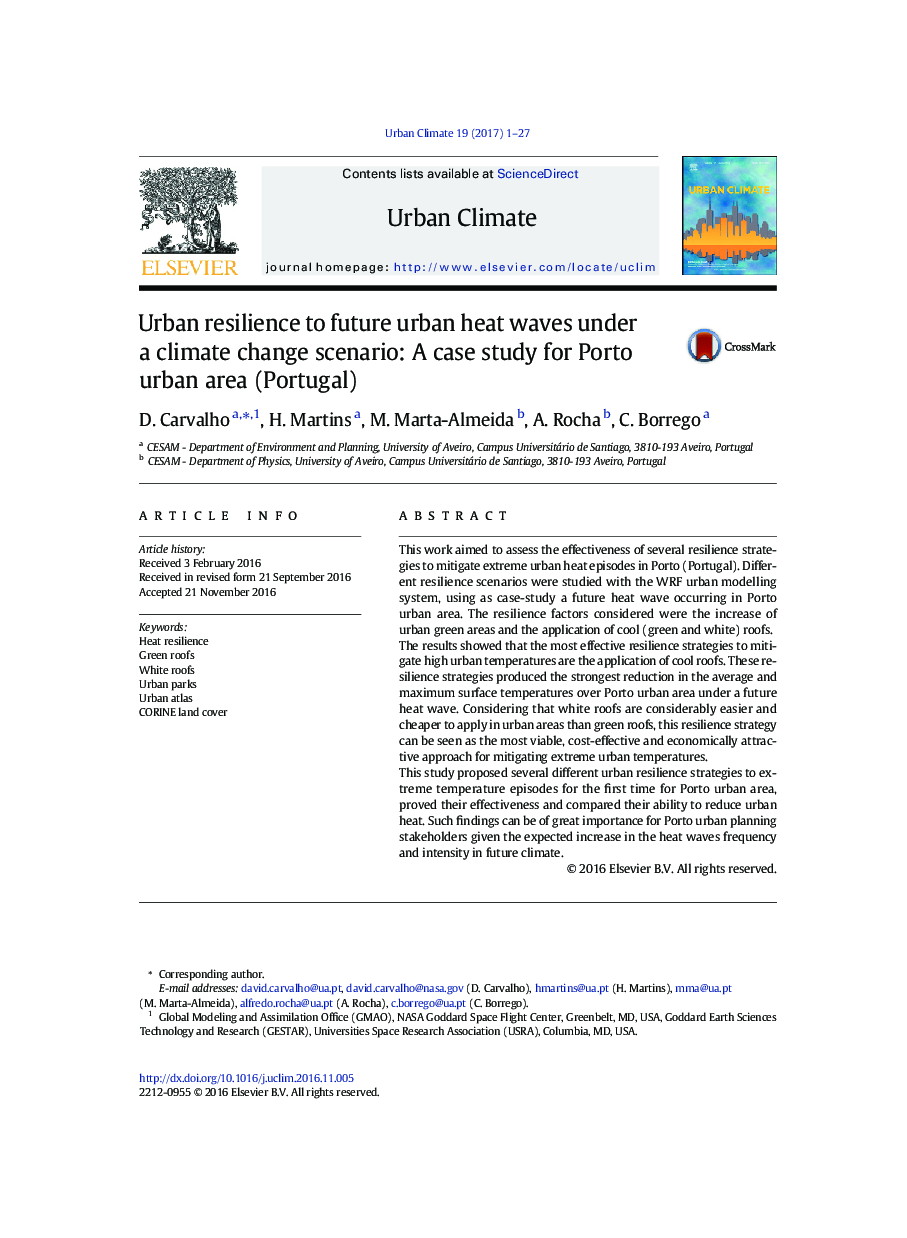| Article ID | Journal | Published Year | Pages | File Type |
|---|---|---|---|---|
| 4762373 | Urban Climate | 2017 | 27 Pages |
â¢Urban parks, green and white roofs were studied as resilience measures for urban heat.â¢A future heat wave occurring in Porto (Portugal) area was considered as case-study.â¢Cool roofs are the most effective strategies to reduce urban heat.â¢White roofs are the most viable and cost-effective approach.â¢Expansion of urban green areas produce a localized reduction in urban temperature.
This work aimed to assess the effectiveness of several resilience strategies to mitigate extreme urban heat episodes in Porto (Portugal). Different resilience scenarios were studied with the WRF urban modelling system, using as case-study a future heat wave occurring in Porto urban area. The resilience factors considered were the increase of urban green areas and the application of cool (green and white) roofs.The results showed that the most effective resilience strategies to mitigate high urban temperatures are the application of cool roofs. These resilience strategies produced the strongest reduction in the average and maximum surface temperatures over Porto urban area under a future heat wave. Considering that white roofs are considerably easier and cheaper to apply in urban areas than green roofs, this resilience strategy can be seen as the most viable, cost-effective and economically attractive approach for mitigating extreme urban temperatures.This study proposed several different urban resilience strategies to extreme temperature episodes for the first time for Porto urban area, proved their effectiveness and compared their ability to reduce urban heat. Such findings can be of great importance for Porto urban planning stakeholders given the expected increase in the heat waves frequency and intensity in future climate.
